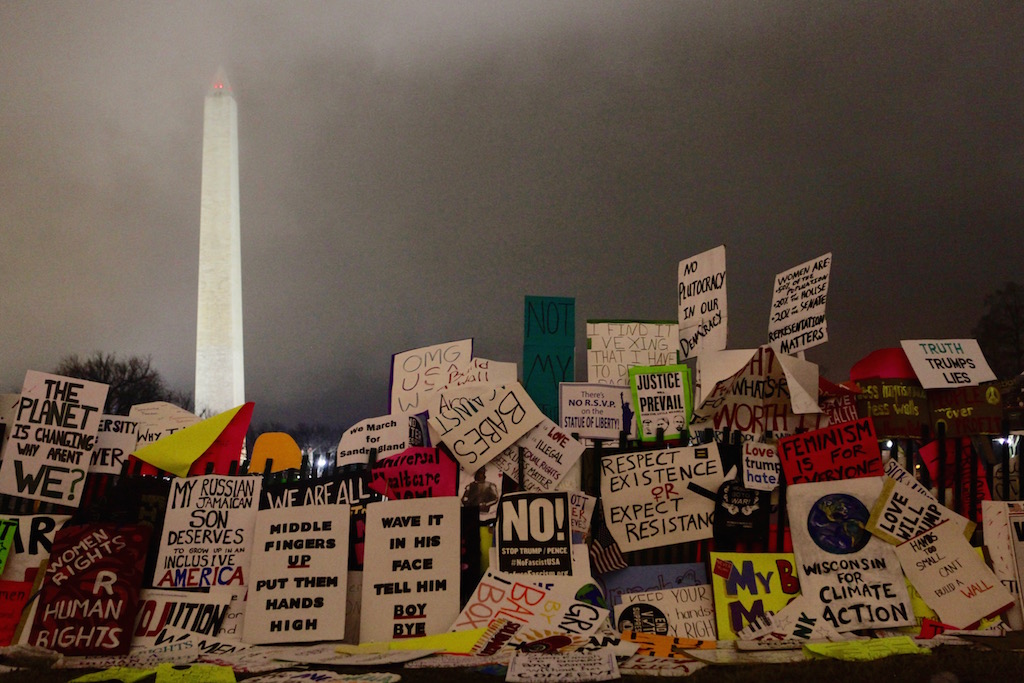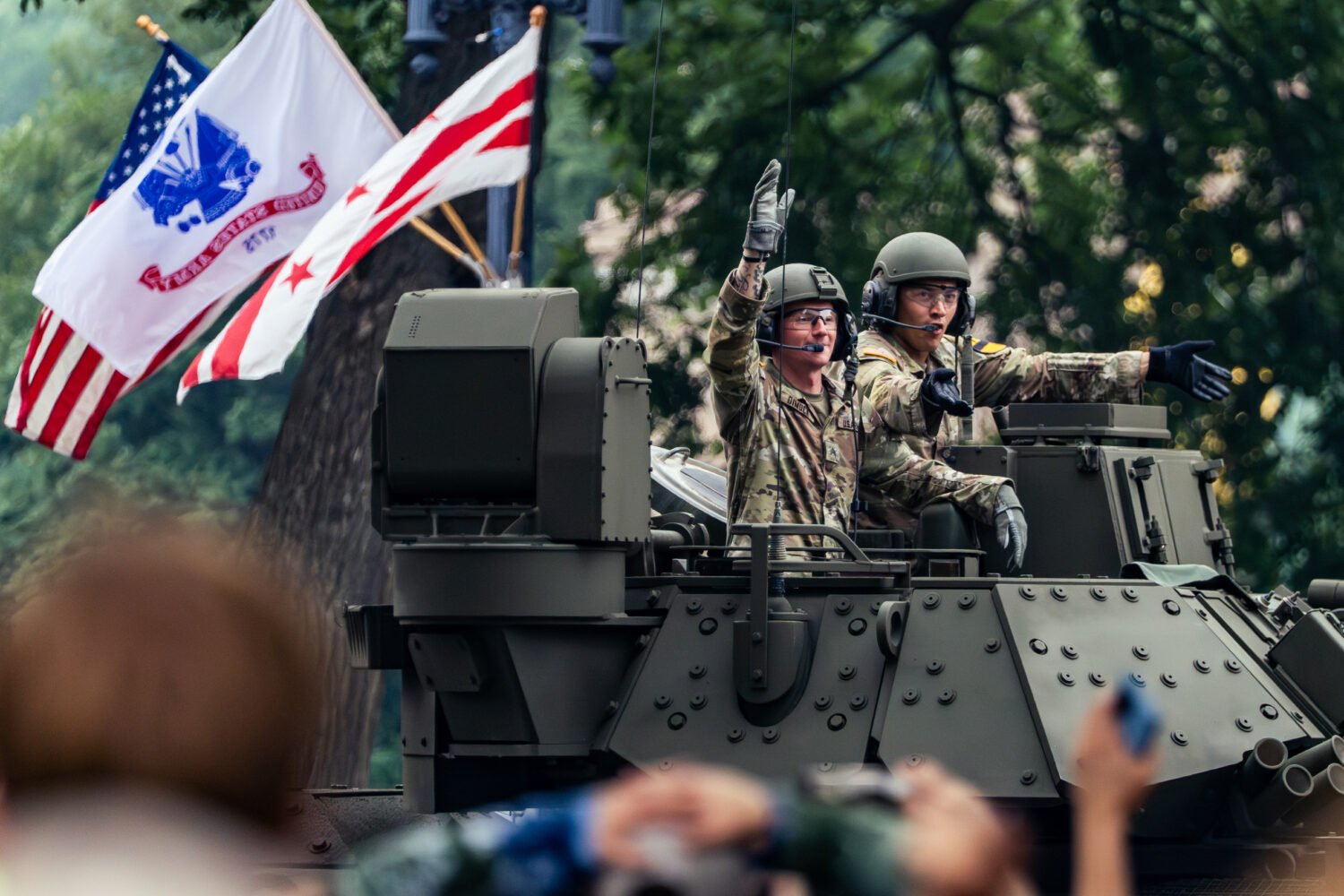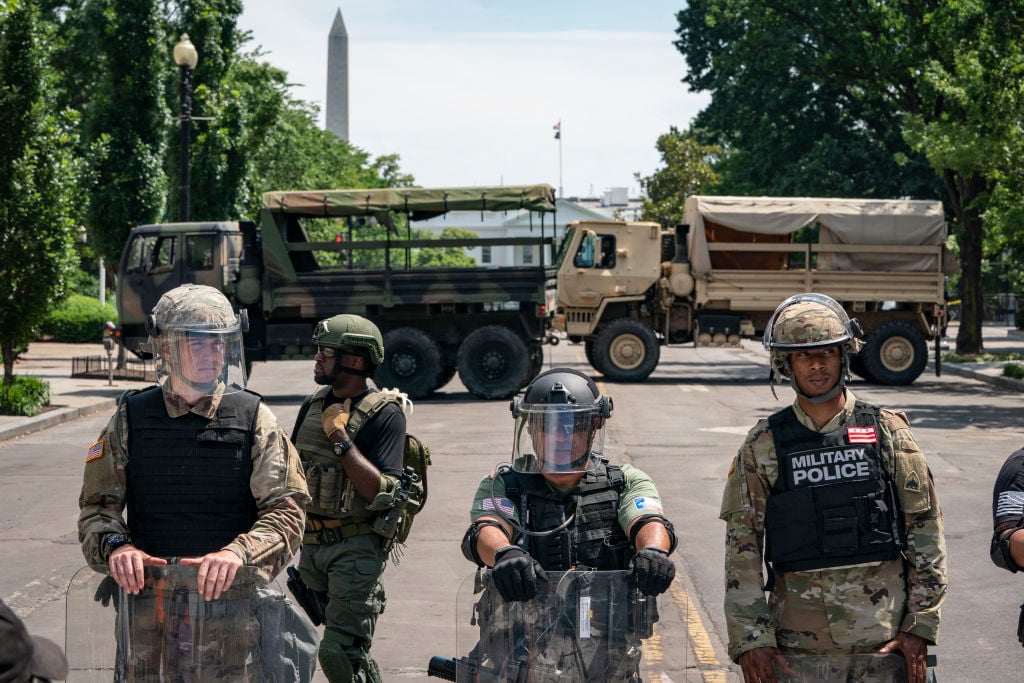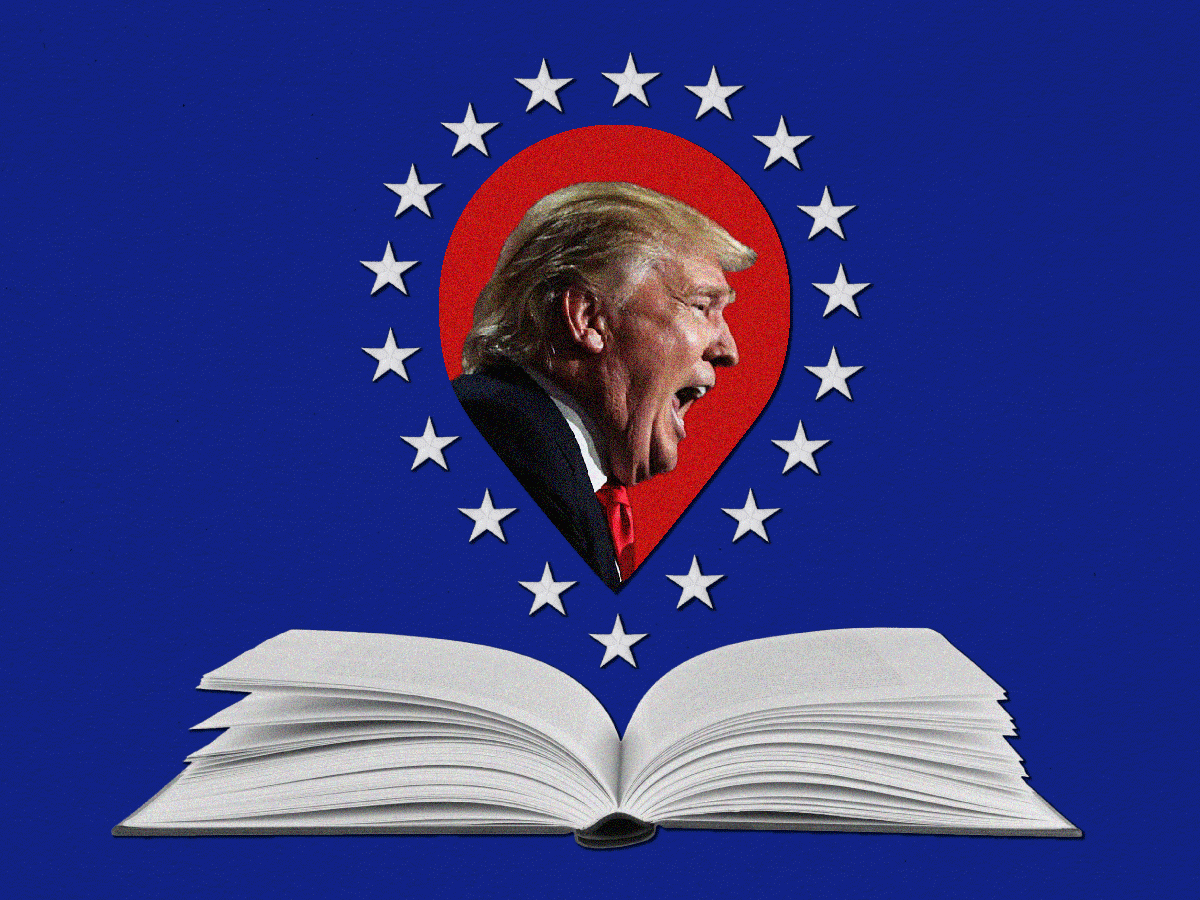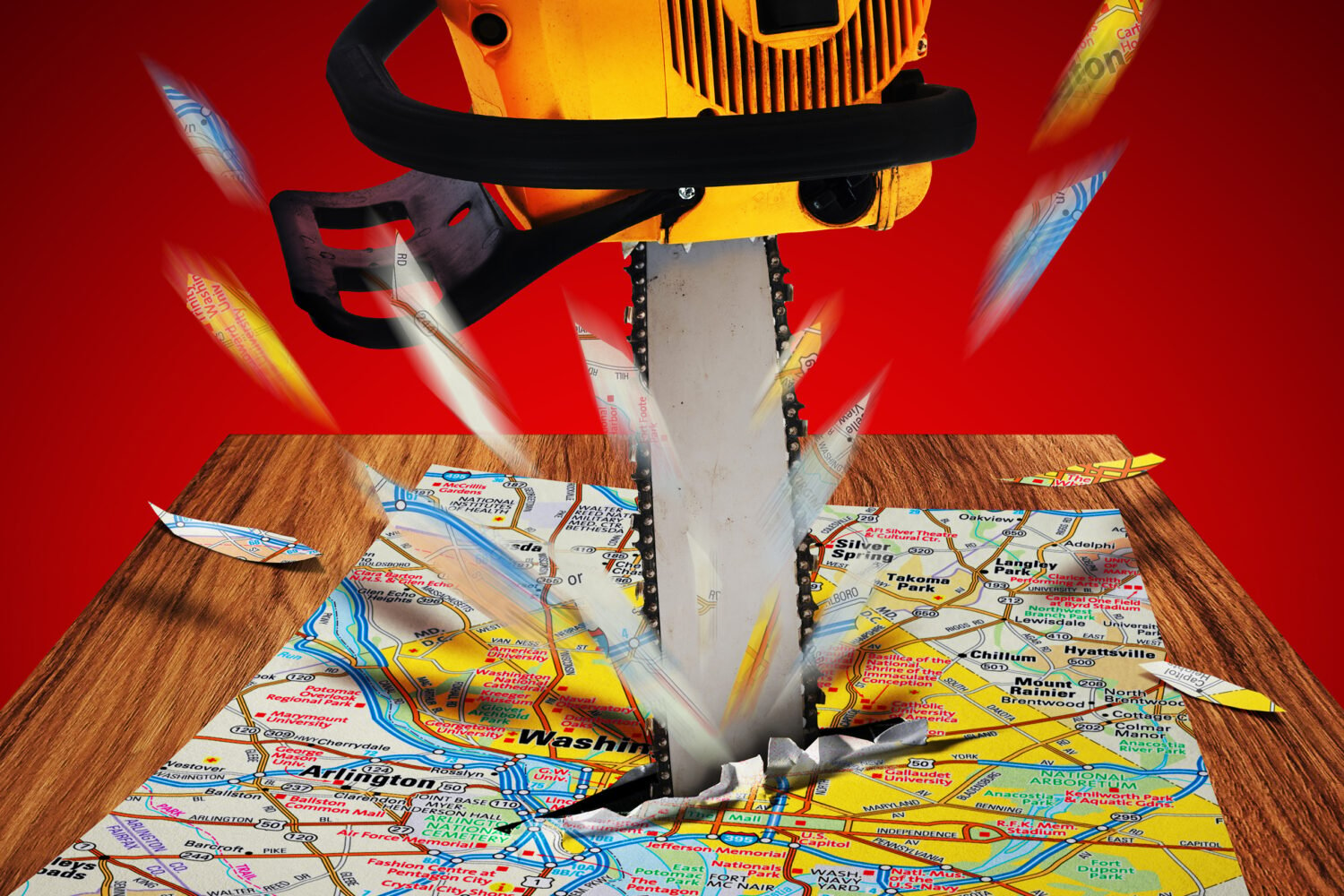There was a moment in October 2019 when impeachment was just brewing—almost an eternity ago—that an exciting idea flashed into left-wing consensus. What the impeachment drama direly needed, right then, was protests. Big protests.
In places like South Korea, Puerto Rico, and Romania, the logic went, citizens had taken to the streets to push the ouster of governments credibly accused of crookedness. If regular people could shape the narrative in newer democracies, surely they could do the same in the United States.
“There should be mass nonviolent action calling for Trump’s removal,” wrote Michelle Goldberg in the New York Times, noting that “a growing number” of Americans were “calling for mass protest in response.” Vox’s Matt Yglesias, the Times‘ David Leonhardt, the New Republic‘s Brian Beutler, and Jeet Heer in the Nation each wrote emphatic cris du coer for mass mobilization that invoked the culminating, “This-is-it” gravity of a once-in-a-generation constitutional crisis.
Leonhardt concluded with a call to arms: “[I]t’s time for a sequel to that first Women’s March—an Americans’ March, in which millions of people peacefully take to the streets to say that President Trump must go.”
The country is on the eve of an impeachment trial. Predictably, Mitch McConnell has refused to allow even a veneer of fair process, threatening to rig the trial’s outcome and forbid witnesses from testifying—even in the face of an astonishing willingness by John Bolton to divulge to the Senate what he is obviously dying to tell.
If ever there was a moment for mass mobilization—for an eruption of this-is-not-normal, raw-voltage passion to dwarf the sum of all resistance demonstrations—the moment is now.
So, where are the protestors?
The streets of Washington are empty. There is no postering, street art, baby blimp, skywriting, lawn signs, placards in shop windows, nor other creative fare on offer from the Trump resistance. The scene is far removed from September, when hundreds of climate protestors shut down traffic. Today, someone who walked the same streets would encounter little indication that a historic impeachment trial is imminent.
It’s a particular irony, given that the first year of the Trump era—the period of the Women’s March and the real-time mobilization against the immigration ban targeting Muslim-majority countries—saw a lot of assertions (including in this magazine) that Washington had entered a new era of public protest. Americans, some thought, were abandoning their social echo chambers and taking it to the streets.
Writers called for an Americans’ March, in which millions take to the streets. Where are they?
To be certain, impeachment has not been met with silence. October drew scattered rallies. Last week, two dozen protestors turned up at the Hart Senate Office Building, and will continue this week. The largest event came in mid-December, when progressive groups organized 600 rallies to coincide with the House’s adoption of the articles, turning out throngs of protestors to Times Square.
Yet there may have been a bad omen in the timing of those rallies. The strategy embraced by Nancy Pelosi—to withhold the articles from the Senate for weeks—was intended, in part, to produce a flash-point of national discussion, which would then cascade into demands for a fair trial. The mounting indignation might even conceivably bring pressure on key senators, just as the Kavanaugh protests once did. The time for protests was after the articles, not before.
It hasn’t turned out that way. Instead, the drama of Pelosi’s brinksmanship has been met with crickets. “I don’t think it worked,” says Barney Frank, the retired Massachusetts Congressman and gimlet-eyed observer of Democratic politics. “I think what happened was that impeachment did not have the political support people thought it was going to have. Impeachment fell flatter than they thought.”
This is all the more confounding when you consider that, since 2018, it’s been the progressive flank of House Democrats agitating for impeachment, chafing against a reluctant House leadership—a tension nicely memorialized by US Representative Rashida Tlaib, who fired up a roaring crowd by shouting, “We’re going to go in and impeach the motherfucker!”
Washington is worlds away from such energy and passion, save for a clutch of devoted activists. MoveOn says it is running targeted billboard and digital ad campaigns. Indivisible pointed to the sit-ins at the Hart building, called “Swarm the Senate.” One organizer there, Anthony Torres, a leader with the group By the People, urged people to see impeachment itself as a triumph of activist efforts. “From the beginning, the mainstream consensus has been that impeachment is politically infeasible,” Torres says. Activists tipped the balance in the other direction.
The question, then, is why there aren’t more people like Torres, and the dozen-odd activists who dutifully plunk down in the Hart lobby. The beleaguered Women’s March this weekend offers a case in point. Democrats appear willing to march for women, to march for science, to march for our lives. Why aren’t they equally interested in marching for the impeachment of the President of the United States?
Experts have plenty of theories. At fault might be a kind of activism saturation, suggest Dana Fisher, a professor at the University of Maryland whose new book studies the anti-Trump resistance. “If people were really outraged, would they march? Well, everyone who’s going to march has already marched,” she says. She notes that one in five Americans have protested in the past year, an extraordinary figure.
All the while, the rewards of protest can appear uncertain at best. Why march for procedural concessions in a trial you are certain to lose? “What are the opportunity costs?” asked David Cole skeptically, the legal director of the ACLU, which has engineered some of the most creative activism of the Trump era. “Is it mobilizing, or anti-mobilizing,” he asked rhetorically, to spend money and energy “and then not see any result from it?”
In Cole’s view, the presidential primaries, along with policy battles in state legislatures, are bigger forces gobbling up activist energies—battles he described as “efforts where you can make a difference.”
But the biggest problem may be cognitive: If you can picture the unromantic task of formulating a protest chant to rhyme with “subpoena compliance,” or hoisting John Bolton’s face earnestly on a protest placard, then you have some idea of why progressives are reticent to march on Washington. “Nobody ever marches for those reasons,” Fisher says. “They march for the vote. They march for reproductive rights.”
This is a serious problem, however, if you’re among the 57 percent who want to see a fair impeachment trial. This is because mass protest is still effective. As journalists have noted, democracies elsewhere have seen mass protest become the “x-factor” that catapults corruption into a national cause elsewhere, in some cases, jettisoning their chief executive. Mass mobilization, Yglesias writes, is what transforms ordinary politics into “extraordinary” politics.
The reluctance to mobilize for impeachment echoes Merrick Garland: An imperfect opportunity that won’t come again.
Between October and January, the tactical dimension of mass protest, it’s potential energy, has ballooned. True, the prospects of Trump’s removal have gone from remote to inconceivable. But in the bargain, impeachment has managed to take on more significance in the presidential election. The economic recession that once seemed plausible is not coming. There is no signal domestic or foreign policy disaster that defines the Trump administration. In most swing states, Trump remains competitive.
Instead, the message that Democratic strategists are sowing for 2020 will be anchored to one theme: Corruption, the issue where Trump’s persona and policy become one. As Leah Greenberg, co-founder of Indivisible, puts it, “This man is not working for you. He is working to put his own interests first. And he is endangering the country to do it.”
This is the context for impeachment: Not in winning a trial but in framing the 2020 election in the boldest and most dramatic terms, while there’s still time. Here again, Leonhardt has it right: The measure of impeachment’s effectiveness won’t be its outcome, but whether Trump “is not president on Jan. 21, 2021.”
Protest alone can’t achieve this. But mass demonstrations have a measurable utility. This comes mainly in the form of broadcasting cues—like the broad swaths of Americans who overwhelmingly supported the pillars of Obamacare but, faced with massive Tea Party rallies that sucked in neighbors and friends, voted against it, or didn’t vote. (This correlation, though controversial, has been documented—the bigger the rally, the stronger the electoral effect.)
Frank pushed back against all this. “I’d rather them be lobbying friends and writing officials than marching,” Frank says. Even if protests were smart, he added, Democrats suffer an extra obstacle. Marching for impeachment is about mobilizing proudly for institutions, and taking cues from party leaders, skills that liberals have never had the same proficiency for as their conservative peers. “I blame part of the left for that,” says Frank, naming Bernie Sanders. “You cannot consistently tell people that the institutions are corrupt,” he went on, “then motivate them to try to influence those very institutions you have denigrated.”
Progressives counter with the opposite argument—that impeachment hasn’t gone far enough. Writers like Heer argue that in order to create a mass movement, impeachment should have gone beyond Ukraine, encompassing the whole of Trumpism: self-enrichment, climate change, immigration raids, the erosion of civil society. The tepidness of Democrats to mobilize en masse can be explained by the partisan canyon that separates Tlaib’s idea of impeachment and Pelosi’s—an impeachment designed to win Republicans votes.
Maybe Heer and Frank are right. But it’s too late. This is the impeachment we have—and its advantages should not be overlooked, either. Sizable majorities now want a fair and full Senate trial, giving impeachment the backing of popular support. Will Democrats seize it?
That’s unlikely, says Fisher, who sees party leaders and activist groups eager to wrap up impeachment and barrel full-steam into November. “There’s nothing there that they want to pull themselves away from the course, which is Election 2020,” she says.
The Democrats’ dilemma bears a resemblance to a not-so-distant episode: The political homicide of Merick Garland. In the face of a constitutional emergency, Democrats couldn’t summon the outrage to fight for such a moderate nominee—not when an election was around the corner, in any case.
If voters are meant to believe that Trump’s corruption is a crisis of existential proportions in November, Democrats need to show the country convincingly now. The risk is that they will look back on impeachment the way activists looked back on Garland: An imperfect opportunity that won’t come again.
“If all of those groups could have had a crystal ball? And said, Oh my God, Trump is going to become president?” Fisher mused. “They would have done something very different.”

